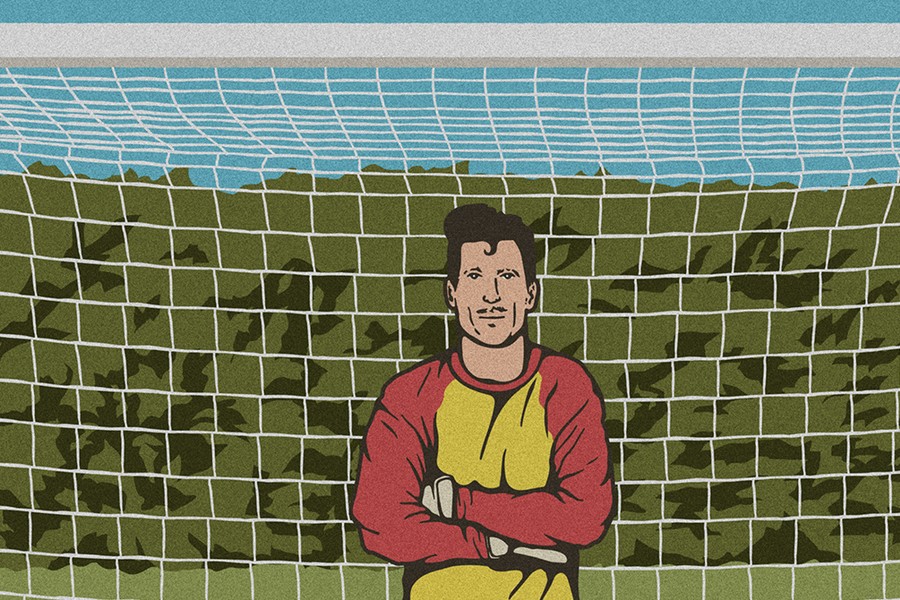The answer boils down to a fear of inaction. Firstly, if your life’s work is goalkeeping, you probably won’t admit to yourself that all you have to do is stand still: you’ll want to do something. Secondly, if you do stand still and the ball goes in the top corner, the fans might wonder why you didn’t bother “trying” to save the ball. (Actually you did try, it just didn’t look like it).
This explanation has a number of parallels with the world of investment and is important to highlight in the wake of recent market volatility and the head-spinning array of topics (US-China trade wars, rising US bond yields, Brexit, “peak iPhone”, to name but a few) that has many investors busying themselves with trying to forecast what happens next, and choosing the assets to go with it. While it is tempting in these times to dive left and right, it is often not the best thing for performance. For one thing, trading is a costly business which eats into long term returns. Secondly, timing the market is hard, and performance can come when you least expect it. As an example, investing in the S&P500 at the end of 2002 for 15 years would have made you about 4.5x your money (despite this period containing the financial crisis). But if you missed only the best 30 days out of those 15 years, your return would have been negative. We can often be our own worst enemy.
Of course one reason that many investors fail to stick with what they have is that they have not bought companies they want to own indefinitely. To overcome this, there is a simple solution: only buy good companies. This way you should feel more confident about standing your ground. A good company can mean many things but, for an investor, the most important thing is it should be one that can make high returns on the capital it employs in its business, in cash. If a company can raise money at a cost of 10% and invest it at 20% then it is going to improve its value over time. Many companies, alas, do the opposite. Next, it should have the opportunity for growth, ideally with limited cyclicality, so that it can continue to invest in its business at consistently high returns. Finally, and importantly, it should be able to protect itself against competition, which can cause returns to fall. This last point tends to favour companies with high levels of “intangible” assets, such as brands or patents: these take time to build and are hard to replicate. If you just have tangible assets (financial capital in the case of a bank, or physical assets like factories) it is easier to be outcompeted by a company with deeper pockets. A company that has all these attributes should be able to achieve compound growth in its cash flow over time and, if it does that, its share price should compound too, almost irrespective of what you pay for it. This final element may seem odd, given the penchant of analysts and market commentators for talking about whether a stock is “cheap” or not. But it is true. If you had bought the S&P500 on its trough price-earnings** ratio (5.3x, in 1917) and sold it at its peak valuation (34.0x in 1999) you would have made a compound annual return of 11.6% per year. But only 2.3% of that return would have come from valuation. The vast majority came from earnings growth.
In investment, being small may have its benefits.
In seeking companies of this “good” sort, one often settles on larger ones, with well-established brands and long track records. Companies like Unilever or PepsiCo are obvious examples. Indeed, “making yourself huge” is an oft-used goalkeeping tactic. But in investment, being small may have its benefits too. Adding smaller companies to your portfolio can make a lot of sense, for a few reasons. First, smaller companies can often grow faster (as they start from a smaller base) and so tend to perform better: a 10-year investment in the small cap component of the MSCI World Index would have made you just under 14% per year, compared to just over 11% in the large cap component (that may not sound like much of a difference, but on a £10,000 initial investment, the former strategy would have made you £8,000 richer than the latter one). Secondly, fewer analysts look at smaller companies, which means there is a greater chance of them being mispriced, which in turn means you have a better chance to outperform the market. Finally, even though smaller companies can be more volatile than their larger peers, they are often not that correlated to them. This means adding smaller company exposure to your larger cap holdings can achieve the seemingly unthinkable: increasing your prospective overall return, while simultaneously reducing your risk.
So if you own good companies, and are considering where to dive next, it might be time to re-work an old saying: “don’t just do something, stand there.”
*Action bias among elite soccer goalkeepers: The case of penalty kicks. Michael Bar-Eli, Ofer H. Azar, Ilana Ritov, Yael Keidar- Levin and Galit Schein; Ben-Gurion University of the Negev and The Hebrew University of Jerusalem; 2005
**The Price-to-Earnings Ratio is a ratio for valuing a company that measures its current share price relative to its per-share earnings.



